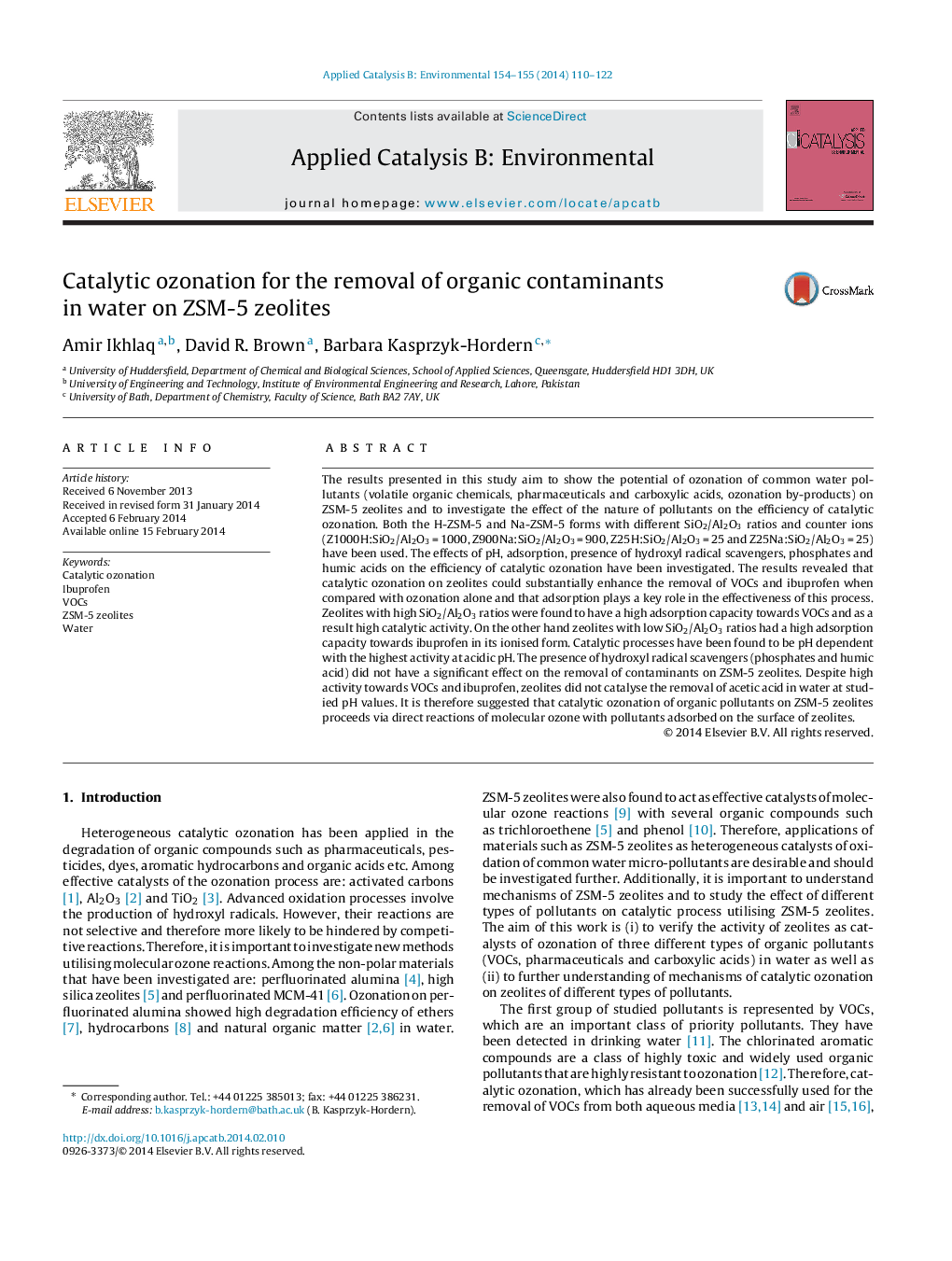| Article ID | Journal | Published Year | Pages | File Type |
|---|---|---|---|---|
| 45045 | Applied Catalysis B: Environmental | 2014 | 13 Pages |
•Catalytic ozonation for the removal of organic compounds on ZSM-5 zeolites was studied.•Zeolites were found to be effective for the removal of ibuprofen and VOCs.•No significant removal of acetic acid was observed.•Humic acid, tertiary butyl alcohol and phosphates did not affect activity of zeolites.•Catalytic ozonation proceeded via direct reactions of molecular ozone with pollutants.
The results presented in this study aim to show the potential of ozonation of common water pollutants (volatile organic chemicals, pharmaceuticals and carboxylic acids, ozonation by-products) on ZSM-5 zeolites and to investigate the effect of the nature of pollutants on the efficiency of catalytic ozonation. Both the H-ZSM-5 and Na-ZSM-5 forms with different SiO2/Al2O3 ratios and counter ions (Z1000H:SiO2/Al2O3 = 1000, Z900Na:SiO2/Al2O3 = 900, Z25H:SiO2/Al2O3 = 25 and Z25Na:SiO2/Al2O3 = 25) have been used. The effects of pH, adsorption, presence of hydroxyl radical scavengers, phosphates and humic acids on the efficiency of catalytic ozonation have been investigated. The results revealed that catalytic ozonation on zeolites could substantially enhance the removal of VOCs and ibuprofen when compared with ozonation alone and that adsorption plays a key role in the effectiveness of this process. Zeolites with high SiO2/Al2O3 ratios were found to have a high adsorption capacity towards VOCs and as a result high catalytic activity. On the other hand zeolites with low SiO2/Al2O3 ratios had a high adsorption capacity towards ibuprofen in its ionised form. Catalytic processes have been found to be pH dependent with the highest activity at acidic pH. The presence of hydroxyl radical scavengers (phosphates and humic acid) did not have a significant effect on the removal of contaminants on ZSM-5 zeolites. Despite high activity towards VOCs and ibuprofen, zeolites did not catalyse the removal of acetic acid in water at studied pH values. It is therefore suggested that catalytic ozonation of organic pollutants on ZSM-5 zeolites proceeds via direct reactions of molecular ozone with pollutants adsorbed on the surface of zeolites.
Graphical abstractFigure optionsDownload full-size imageDownload as PowerPoint slide
